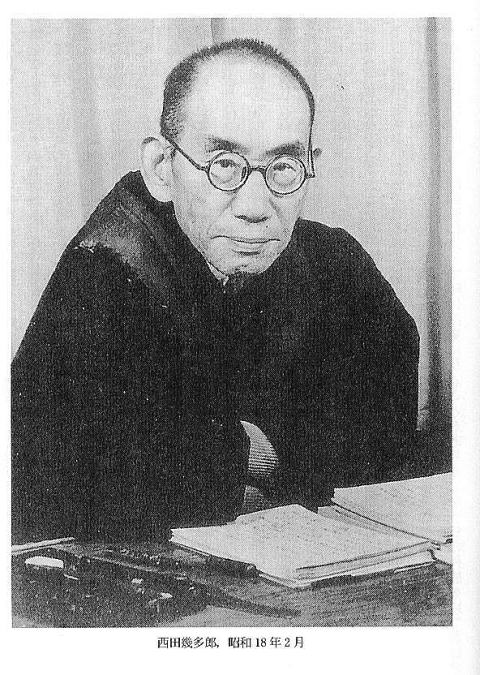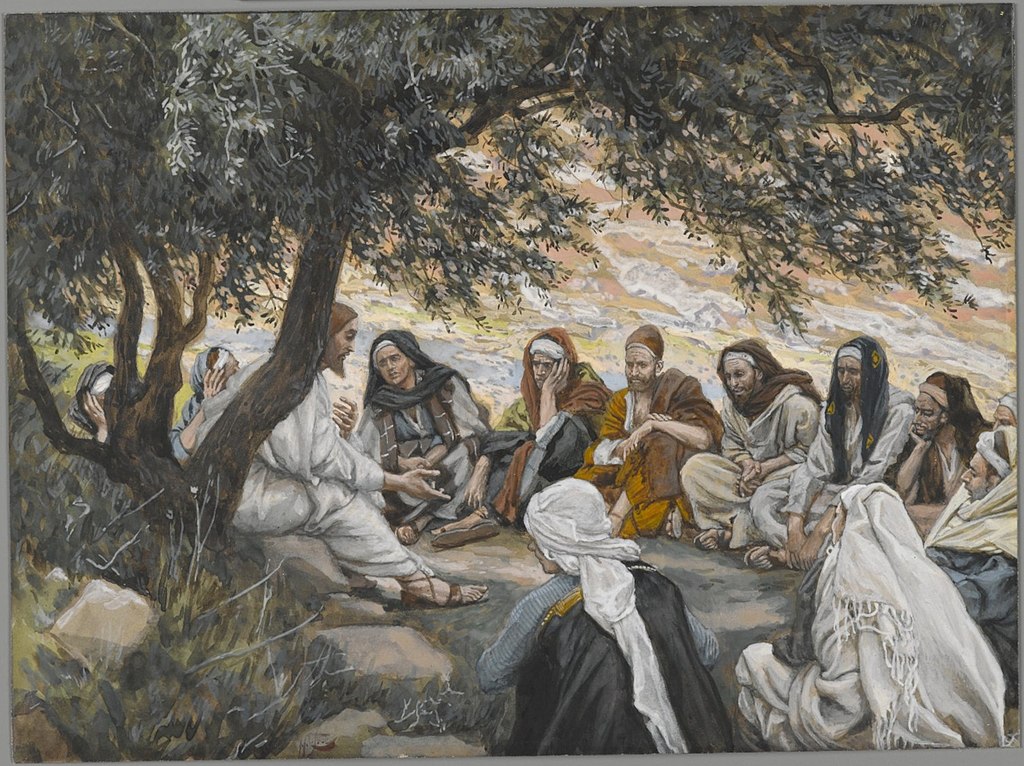“In any religion, it is the effort of self-negation that is necessary” (Nishida Kitaro)
“Morally based repentance is not religious repentance.”

In “The Logic of Topos and the Religious Worldview,” the last essay he wrote before his death in 1945, Nishida Kitaro, founder of the Kyoto School of Philosophy, throws more light on the concept of repentance he encountered in his studies of Christianity. He does not go back to the word “metanoia,” but makes a sharp distinction between a “morally based repentance” and a proper “religious repentance.” He simply states: “morally based repentance is not religious repentance.”
Nishida had, earlier in the text, criticised Kant for viewing religion “only from the standpoint of moral consciousness,” and he had then stressed the primacy of one’s spiritual experience, since “within the limits of mere reason, religion does not fit.” It is a fact that “one often tries to give a foundation to our religious need based on the imperfection of the erring, deluded self,” but “religious questions are not concerned with what we ought to be as that which acts, or how we should act … religious mind does not arise from such a standpoint … Religious questions … deal with the nature and the mode of existence of the self.”
What, in ordinary parlance today, is understood by “repentance” is, of course, “moral repentance,” “a feeling that follows some wrongdoing … is accompanied by the sense of shame,” but “still leaves room for self-reliance … In moral terms, to repent means to be ashamed of oneself in the face of oneself objectively placed, that is in the face of one’s own moral conscience. In repentance one casts away one’s self. In morality one casts away oneself to other people, that is, to society.”
Nishida continues: “In religious repentance, one casts away oneself to the source of the self, to God the Father, Buddha the Mother.” This is what we would call an existential move, rather than a moral imperative. Nishida points out that “thereby one comes in contact with the experience of the numinous of which Otto speaks in The Idea of the Holy. Subjectively speaking, repentance involves reflection on the root source of the self and contemplation of life and the self, as Buddhists would say. Contemplation here does not mean that one sees a Buddha externally as an object, but rather that one throws light on the source of oneself, and reflects on it. If in contemplation one saw God externally, that would be mere magic.”
We are an absolutely contradictory existence, because this absolutely contradictory self-identity is our very raison d’être
Nishida then asks: “Why is the self fundamentally religious? Why is it that the deeper we reflect on the ground of the self – that is, the more we become self-aware – the more we feel that the need for religion arises from the depths of our being and our struggle with religious problems intensifies? It is because we are an absolutely contradictory existence, because this absolutely contradictory self-identity is our very raison d’être. Everything is in constant flux, transient, and impermanent. All living beings die, and there is no life without death. This is already a self-contradiction … To know one’s own death means that one is nothing and being at the same time.” To be simultaneously absolutely nothing and being – this is the height of contradiction.” Religion arises out of this “absolutely contradictory self-identity.”
The words here translated as “absolutely contradictory self-identity” are “Zettai mujunteki jikodoitsu.” Zettai, means absolutely, mujunteki, contradictory, jiko, self, and doitsu, identity. The phrase has been translated as “the self-identity of absolute contradictories.” “Self-contradictory identity,” or “contradictory self-identity,” would be shorter translations. In the West, it is referred to as the “unity or coincidence of opposites.” In Buddhism it is implied in the doctrine of co-dependent origination, wherein all “things” arise as pairs of opposites, with each member of the pair necessarily including its opposite. In Daoism it is spelled out as the Dao dynamically “way-making” through the world as the interplay of yin and yang. For Nishida, the logic of affirmation through negation constitutes the very essence of religion.
In any religion, it is the effort of self-negation that is necessary
In Japan, it is often said that Zen is a religion of “self power” in contrast to Pure Land, which is a religion of “other power,” because Pure Land practitioners rely on the help of Amida, whereas Zen practitioners are said to only rely on their own diligent practice. Nishida, however, points out that this is an error. He writes: “Essentially, then, there can be no religion of self-power. This is indeed a contradictory concept. Buddhists themselves have been mistaken about it. Although they advocate the concepts of self-power (jiriki) and other-power (tariki) respectively, the Zen sect and the True Pure Land sect, as forms of Mahayana Buddhism, basically hold the same position … In any religion, it is the effort of self-negation that is necessary.” Zen cannot be described as a religion of self power, because it does not rely on the self but on the negation of the self, like any other religion. “Our religious awareness does not arise from out of our self, but it is God’s call, Buddha’s call. It is the work of God or Buddha, and arises from the very ground where our self comes into being.” What this also means is that “The self, we must say, possesses itself through its own self-negation.”
This is also what is sought in Christianity, when the practitioner is called to “forget” (or “sacrifice,” or, in philosophical terminology, “negate” the self). It is not a call to suppress one’s subjective function … What one is called to do is simply dis-identify from the representation of the subjective function as the “thing” called “self,” in order to access what Dogen calls the “true” self, which is one’s genuine subjective function – an experienced dynamism, a verb rather than a noun – which is one with the cosmos as a whole.
We could say, following Ueda Shizuteru, a disciple of Nishida, that “I, in not being I, am I,” in other words, “I, in not idenfiying with my ego-self, am I, my true self. This, in a nutshell, encapsulates the essence of the religious life, which, in its Christian articulation, consists in a dis-identification from “words” in order to go beyond them, to reach “Heaven within” and become a true “Son of God.”
Metanoia as access to a new mode of consciousness
This, then, is what Jesus taught as the Way leading to metanoia as the Kingdom of Heaven through a transformative experience comparable to Buddhist awakening, on earth, in this life, and not after we die.
Rather than “repentance” as a translation for metanoia, the phrase “change of heart,” or even access to a new mode of consciousness,” could have been used whereby we must strive to overcome our sense of separateness and “align our will with God’s will.” What Christianity calls “sin” in Jesus’ teaching is precisely this sense of separateness. So when Christianity says that we all born sinners and must repent our sins to enter the Kingdom of Heaven, what is meant is not that we must atone for any wrongdoing, but simply that we must overcome our illusion of separateness – by negating our sense of self – in order to align ourselves with God.
Sources:
Nishida Kitaro – “The Logic of Topos and the Religious Worldview,” translated by Michiko Yusa – Eastern Buddhist, vol XIX-XX (1986-87)
Tim Langdell – Christ Way, Buddha Way
Bret W Davis – “The Contours of Ueda Shizuteru’s Philosophy of Zen” in Tetsugaku Companion to Ueda Shizuteru

